Purulia Observatory
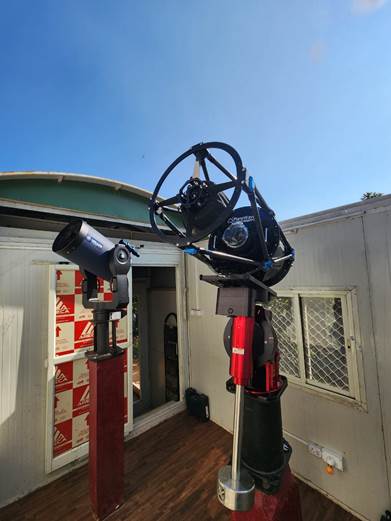
- 14 Jan 2025
In News:
New observatory at remote Purulia district West Bengal is expected to contribute significantly to Astrophysics.
Key Highlights:
Location and Significance:
- Established by: S.N. Bose Centre for Basic Sciences (SNBCBS), an autonomous institute under the Department of Science and Technology (DST), India.
- Location: The observatory is situated at Panchet Hill, in the Garpanchakot area of Purulia district, West Bengal, at an elevation of 600 meters above ground level.
- Longitude Gap: Positioned at a longitude of approximately 86° E, this observatory fills a critical longitudinal gap in global astronomical observation networks. There are very few observatories along this longitude, making it strategically important for observing transient astronomical phenomena that last from minutes to hours.
- Global Impact: This location will allow for unique contributions to global astrophysical research, especially in observing transient events, which require observatories spread across all global longitudes.
Technological and Educational Role:
- The observatory is equipped with a 14-inch telescope for scientific observations.
- It will serve as a training ground for students and researchers, helping them to handle telescopes, record astronomical data, and engage in research.
- The observatory aims to foster national and international collaborations in astronomical research, furthering India’s contributions to the field.
Collaborations and Ecosystem Development:
- MOU with Sidhu Kanu Birsa University: The observatory will be run jointly with Sidhu Kanu Birsa University, sharing resources and responsibilities. The collaboration promises to bring scientific and educational advancements to Purulia, a district traditionally considered backward.
- The establishment of the observatory is expected to boost the local ecosystem, creating a space for scientific engagement and inspiring students in the region.
Research and Contributions:
- The research team, from the Department of Astrophysics at SNBCBS, contributed to the conceptualization, site characterization, and installation of the telescope.
- Their efforts ensure the observatory will be capable of high-quality scientific observations, especially with regard to weather parameters and astronomical seeing conditions.
Future Prospects:
- Scientists emphasized that the observatory will significantly contribute to the global body of knowledge in observational astronomy.
- Also highlighted the potential of the observatory to create a scientific ecosystem in the region.
- The observatory will also serve as a source of inspiration for students in Purulia and provide a much-needed boost to local education in the fields of science and astrophysics.
Konkan Region’s Sada and Biodiversity
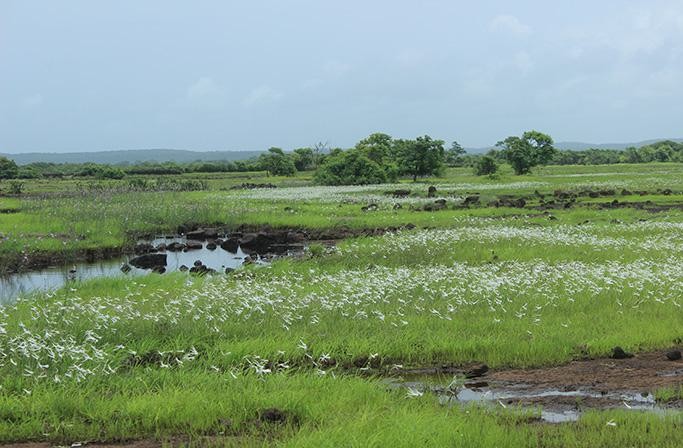
- 14 Jan 2025
In News:
A Konkan secret, the flat-top sada is a freshwater paradise.
Key Highlights:
Geography of Sada:
- The Konkan region lies between the Arabian Sea and the Western Ghats.
- Sada refers to flat-topped hills, formed by centuries of erosion, and is a prominent feature in the Ratnagiri district.
- These areas are typically barren except during the monsoon season when they come alive with flora and fauna.
Biodiversity and Ecosystem Services:
- A biodiversity survey between 2022-2024 recorded 459 plant species, with 105 being endemic to the Konkan region.
- The survey also identified 31 species of reptiles, 13 species of amphibians, 169 species of birds, and 41 species of mammals.
- These ecosystems play a vital role in water conservation. The lateritic soil layer atop the Sada acts as a catchment for rainwater, recharging the groundwater and providing freshwater to local communities year-round.
Traditional Land Use and Agriculture:
- Local Farming: During monsoons, the Sada is used by locals for growing traditional crops like rice and millets (e.g., nanchani), using sustainable farming practices without pesticides or chemical fertilizers.
- Water Management: The locals rely on open wells, springs, and perennial streams for freshwater, which are carefully maintained through cultural rituals and community hygiene practices.
Conservation and Cultural Importance:
- The region is home to geoglyphs, ancient artworks estimated to be 10,000 years old, adding to its cultural and historical significance.
- Waterbodies on the Sada serve as habitats for species like the Indian flapshell turtle (Lissemys punctata) and provide water for other wildlife, including leopards, jackals, hyenas, barking deer, and migratory birds.
Environmental Threats:
- Land-use Change: Increasing conversion of open land and croplands into orchards and residential areas, along with various developmental projects, threatens the region's biodiversity.
- Mining: Extraction of laterite stones for construction purposes is another environmental risk.
- Wasteland Classification: The region is often classified as a ‘wasteland’ in the Wasteland Atlas, further complicating conservation efforts.
Israel-Hamas Ceasefire and Hostage Release Deal
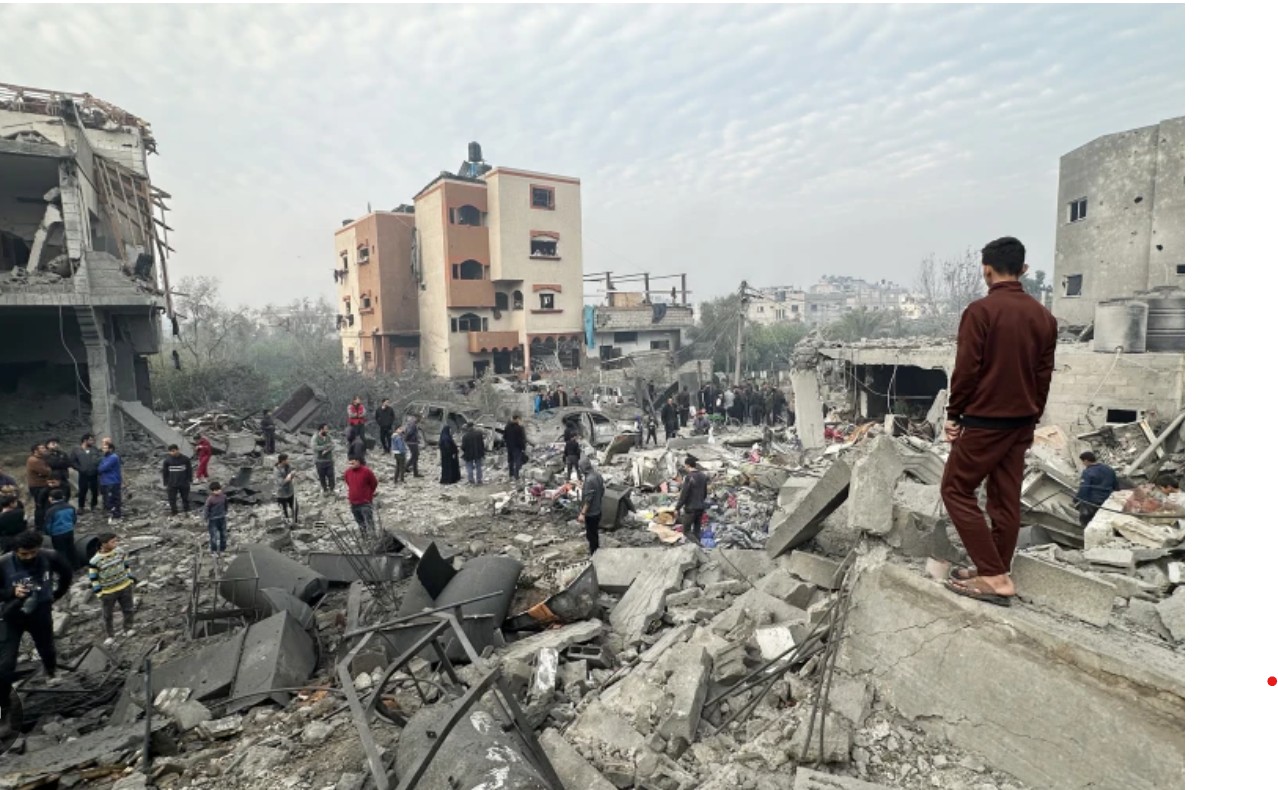
- 14 Jan 2025
In News:
Israel and Hamas have agreed on a Gaza ceasefire and hostage release deal after 15 months of war.
Key Highlights:
Ceasefire Agreement Details:
- Location: The deal was brokered in Doha, Qatar.
- Approval Process: The deal must be approved by Israel’s Cabinet to take effect.
- Mediators: The agreement was negotiated by Qatar, Egypt, and the United States, with their involvement ensuring the implementation of the deal.
Phases of the Deal:
- First Phase (42 Days):
- Release of 33 hostages by Hamas, including women, children, and elderly people.
- Hostage Exchange: Hostages will be exchanged for Palestinian prisoners in Israeli jails.
- Gaza Ceasefire and Withdrawal: Israeli forces will gradually withdraw from Central Gaza and move to the borders.
- Return of Displaced Palestinians: Displaced Palestinians will be allowed to return to Northern Gaza.
- Humanitarian Aid: 600 humanitarian aid trucks will be allowed into Gaza daily.
- Second Phase:
- Hostage Release: Negotiations will begin for the release of remaining hostages.
- Full Israeli Troop Withdrawal: Israel will fully withdraw its forces.
- Third Phase:
- Reconstruction of Gaza: Overseen by Egypt, Qatar, and the United Nations.
- Reopening of Border Crossings: For movement in and out of Gaza.
- Return of Hostage Bodies: Return of any bodies of hostages who died.
Background of the Israel-Hamas Conflict:
- Start: On October 7, 2023, Hamas launched an attack on Israel, called Operation Al-Aqsa Flood, causing significant casualties.
- Israeli Response: Israel launched Operation Iron Sword in retaliation.
- Casualties: The conflict resulted in 46,707 Palestinian deaths, mostly civilians, and 1,210 Israeli deaths.
About Gaza Strip:
- Location: A Palestinian enclave on the Mediterranean Sea, bordered by Israel and Egypt.
- Administration: The Gaza Strip is governed by Hamas since 2006.
- Movement Restrictions: Israel controls air space and shoreline, imposing restrictions. Egypt controls one border and also restricts movement.
Gaza Truce Deal:
- Nature: A proposed ceasefire to end the ongoing conflict.
- Primary Parties: Israel and Hamas.
- Supporting Nations: United States, Qatar, and Egypt.
- Significance:
- Aims to stop fighting and address the humanitarian crisis in Gaza.
- Potential to influence regional stability and Israeli politics.
- Marks an important moment in U.S. diplomacy under the Biden administration.
Nag Mark-2
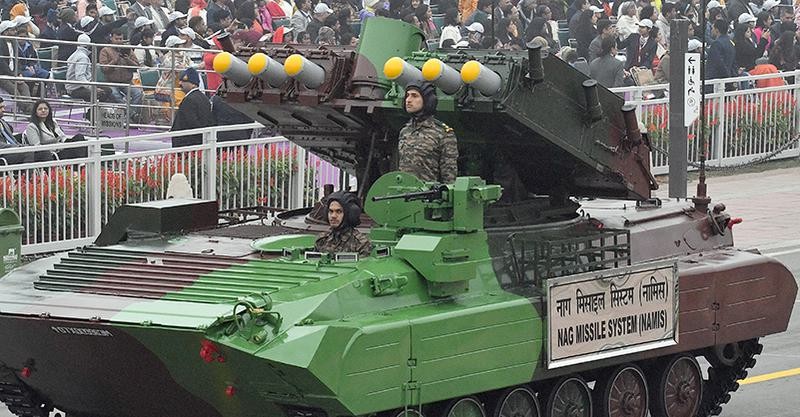
- 14 Jan 2025
In News:
The Defence Research and Development Organisation (DRDO) successfully conducted field evaluation trials of India's indigenous Anti-Tank Missile - Nag Mark 2 at the Pokhran Field Range in Rajasthan.
Overview of Nag Mk-2:
- Type: Third-generation, fire-and-forget anti-tank guided missile (ATGM).
- Development: Indigenous development by Defence Research and Development Organisation (DRDO) under the Integrated Guided Missile Development Programme (IGMDP).
- Functionality: Designed to neutralize modern armored threats, including those with Explosive Reactive Armour (ERA), using advanced fire-and-forget technology.
Technological Features:
- Fire-and-Forget Technology: Operators lock onto targets before launch, allowing the missile to autonomously track and engage targets, ensuring precision strikes.
- Lock-on After Launch: The missile can lock onto the target post-launch, providing flexibility in complex battlefield environments.
- Advanced Guidance System: Equipped with Imaging Infrared (IIR) seekers for enhanced accuracy, both during the day and at night.
Performance and Range:
- Effective Range: The missile has a range of 7 to 10 kilometers, a significant improvement over its predecessor, Nag Mk-1, which had a range of only 4 kilometers.
- Test Trials: Successfully destroyed all targets at both maximum and minimum ranges during the field evaluation trials at Pokhran Field Range, Rajasthan.
- Attack Mode: Includes a top-attack capability to target the vulnerable upper surfaces of armored vehicles, enhancing its effectiveness.
Platform and Integration:
- Launch Platform: The missile is launched from the NAMICA (Nag Missile Carrier) Version 2, a tank destroyer vehicle used by the Indian Army to launch anti-tank missiles.
- Versatility: Designed for integration with multiple platforms, enhancing operational flexibility in different combat scenarios.
Strategic and Operational Significance:
- Indigenous Defence Capability: Reduces India's dependence on foreign weapons systems, strengthening self-reliance in defense technology.
- Enhanced Battlefield Readiness: Provides the Indian Army with a cutting-edge weapon to counter modern armored vehicles, improving tactical advantages.
- Operational Effectiveness: The missile’s precision and ability to neutralize targets with minimal collateral damage make it an essential tool in modern warfare.
- Strategic Deterrence: Demonstrates India’s technological advancements in missile systems, signaling strength and deterrence to adversaries.
Bharat Cleantech Manufacturing Platform
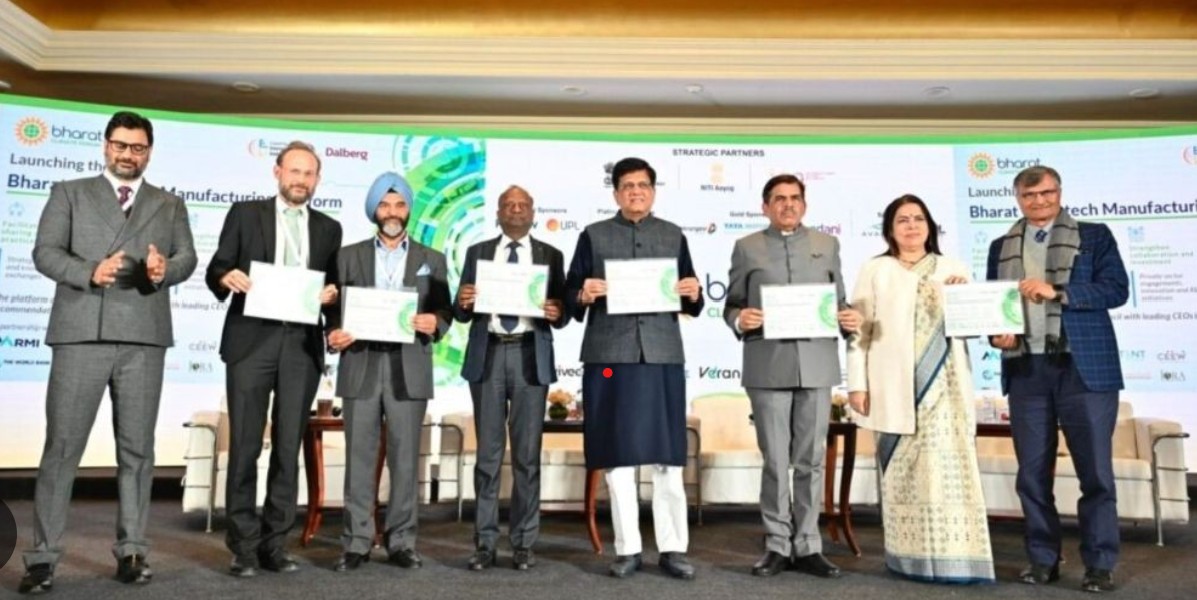
- 14 Jan 2025
In News:
Union Minister of Commerce & Industry Shri Piyush Goyal launches Bharat Cleantech Manufacturing Platform.
Bharat Cleantech Manufacturing Platform:
- Objective: Strengthen India's cleantech value chains, especially in solar, wind, hydrogen, and battery storage sectors.
- Platform Features:
- Aims to promote collaboration, co-innovation, and knowledge-sharing among Indian firms.
- Focus on scaling up manufacturing, sharing ideas, technologies, and resources.
- Acts as a financing platform for the cleantech sector.
- Designed to position India as a global leader in sustainability and cleantech innovation.
India's Clean Energy Commitment:
- Target: 500 GW of clean energy capacity by 2030.
- India has been a front-runner in fulfilling its Nationally Determined Contributions (NDCs) under the Paris Agreement and UNFCCC.
- Early Achievement: India achieved its 2022 renewable energy target of 200 GW, 8 years ahead of schedule.
- Largest Interconnected Grid: India boasts the world’s largest interconnected power grid, enhancing its renewable energy distribution capacity.
- Gujarat is a pioneer in solar power adoption in India.
Union Minister Shri Piyush Goyal's Views:
- On Product-Linked Incentives (PLIs):
- PLIs and subsidies are seen as short-term aids; long-term growth of the clean energy sector depends on it becoming self-sustaining.
- Urged Indian firms to innovate and scale up manufacturing within the country.
- On Clean Energy and Sustainability:
- Stressed the importance of innovation and collaboration to achieve sustainability goals.
- India aims to attract international investors by creating a compelling business case for cleantech investments.
- 3S Approach (Speed, Scale, and Skill): Key to implementing India's renewable energy program, emphasizing rapid deployment, large-scale adoption, and skill development in the sector.
Bharat Climate Forum 2025:
- Event Objective: A platform for policymakers, industry leaders, and stakeholders to discuss climate action, clean energy, and India’s role in global climate goals.
- Key Focus Areas:
- Aligning India’s clean energy initiatives with global climate goals (UNFCCC, Paris Agreement).
- Emphasizing India’s early achievements in clean energy adoption.
- Promoting sustainable development and clean energy solutions.
India's Performance in Renewable Energy:
- India’s progress has been commendable in meeting its climate targets and setting up clean energy capacity ahead of schedule.
- The government’s initiatives, led by Prime Minister Narendra Modi, have made solar power affordable and scalable through transparency in auctions, competitive bidding, and speed in project implementation.
